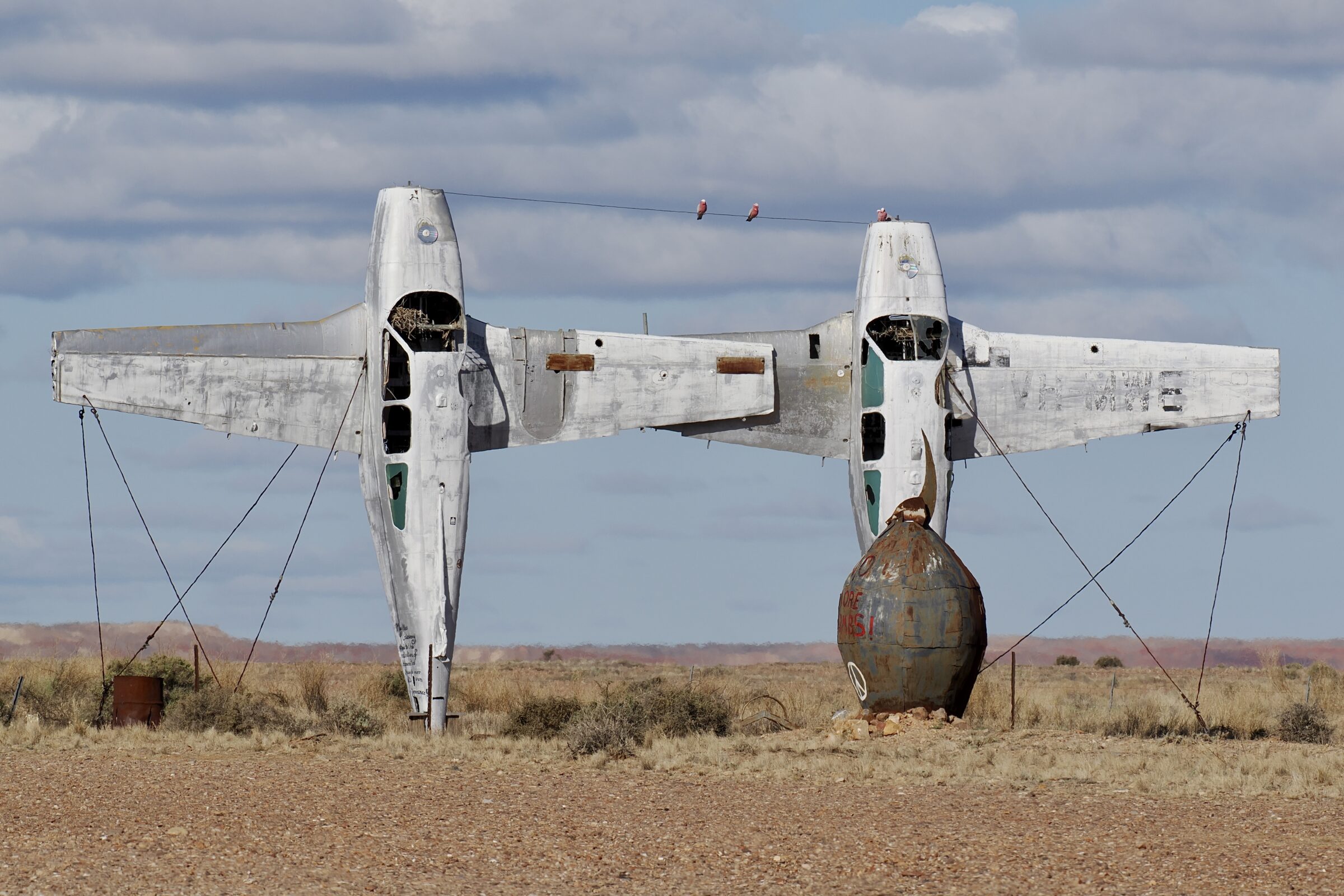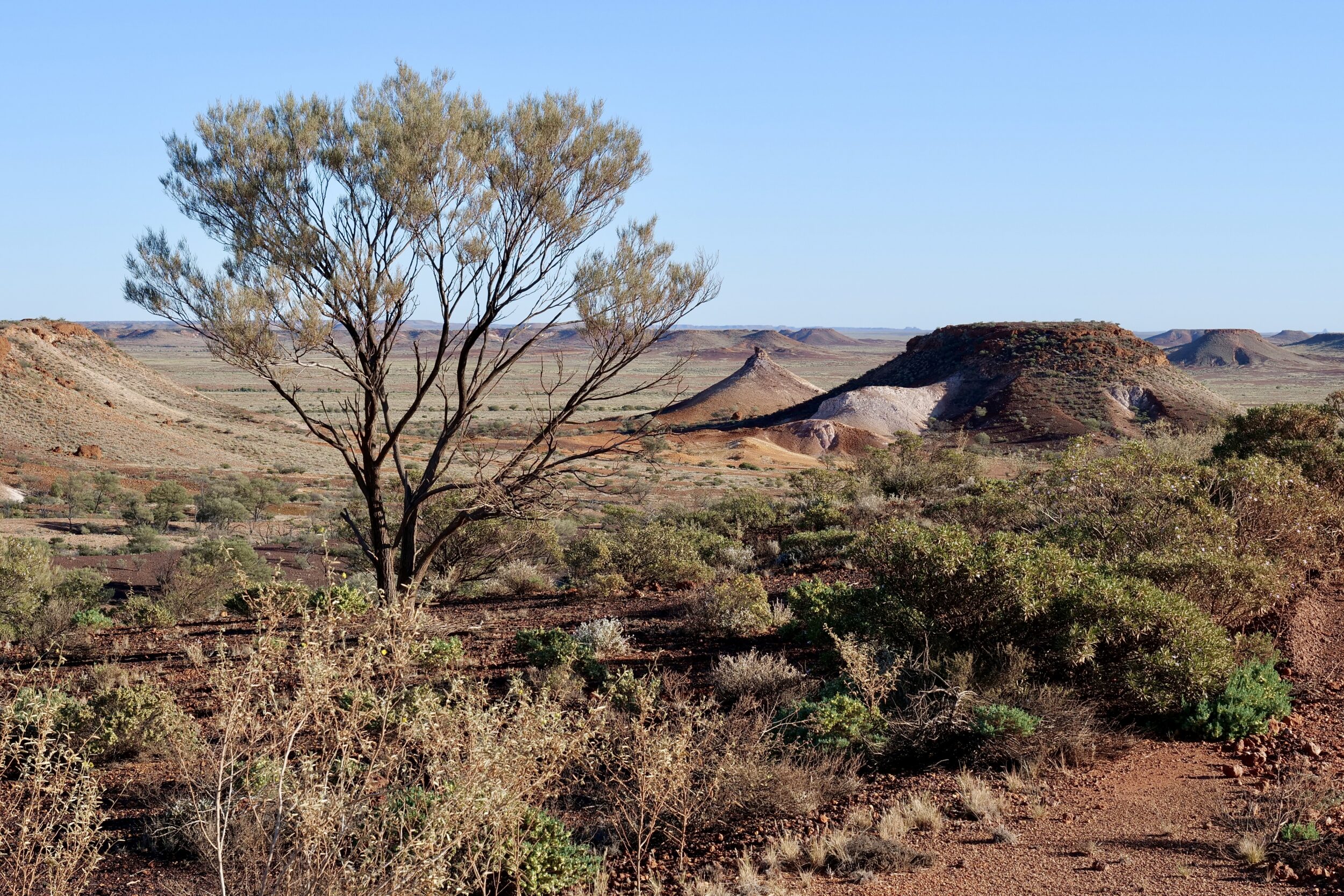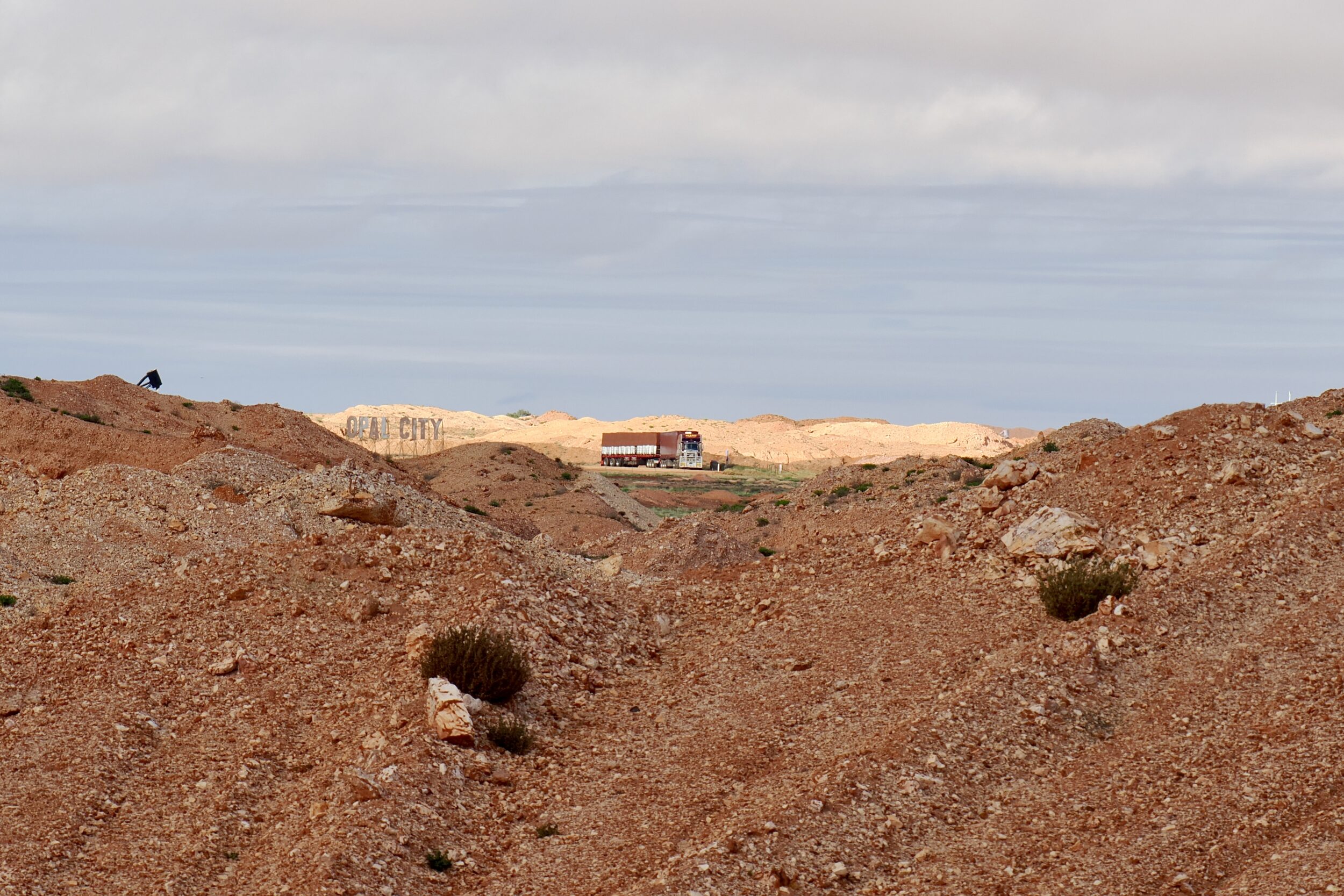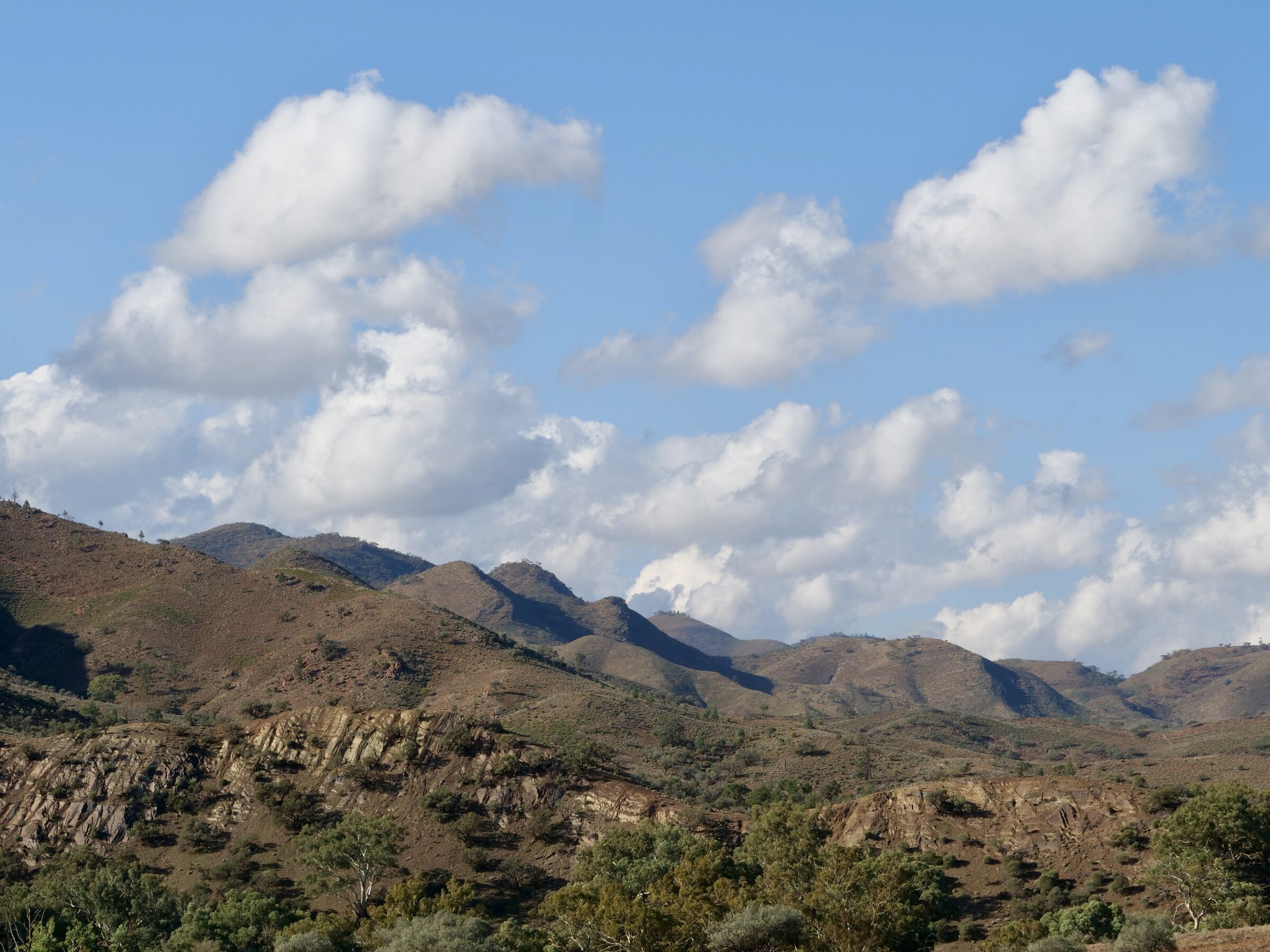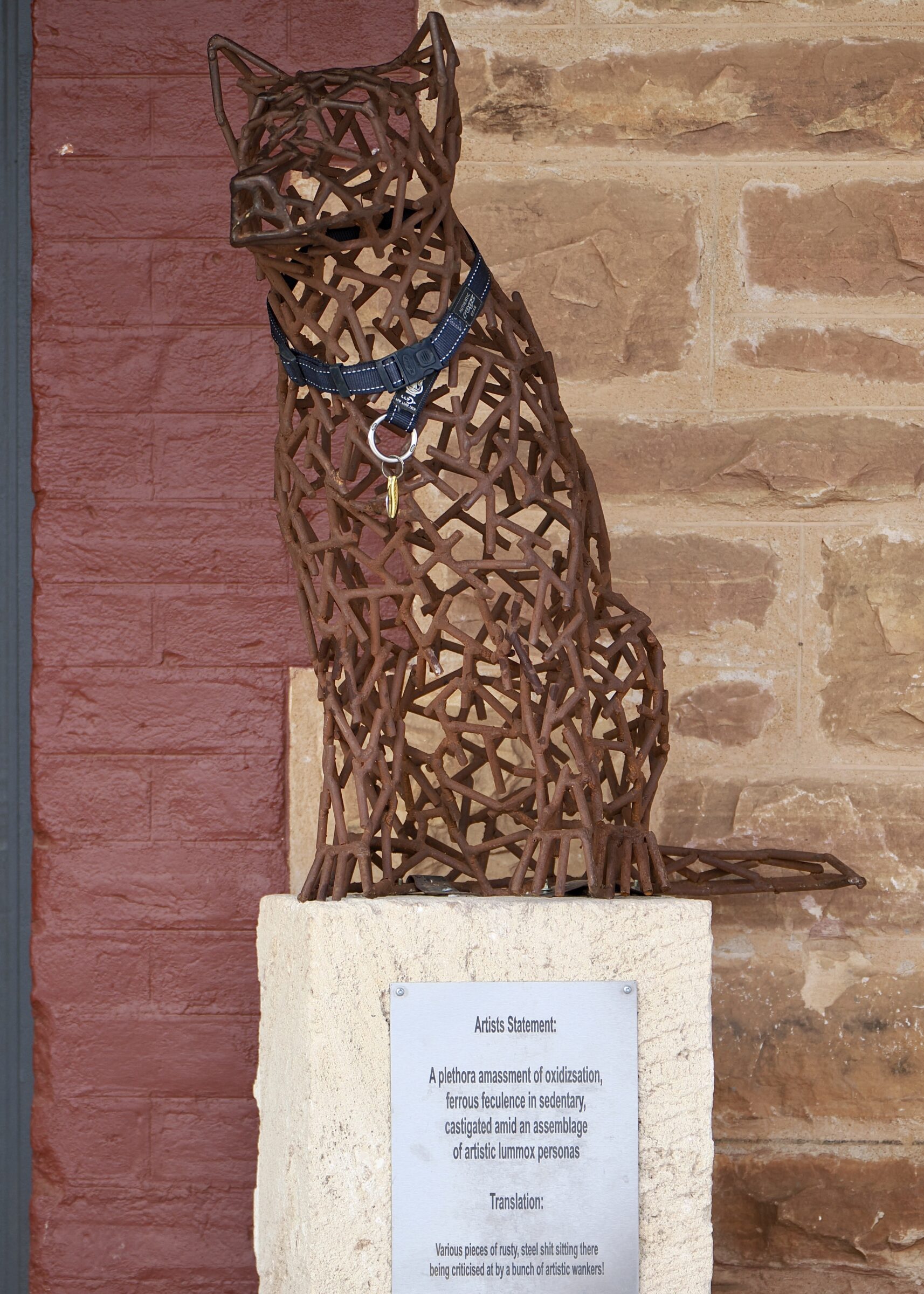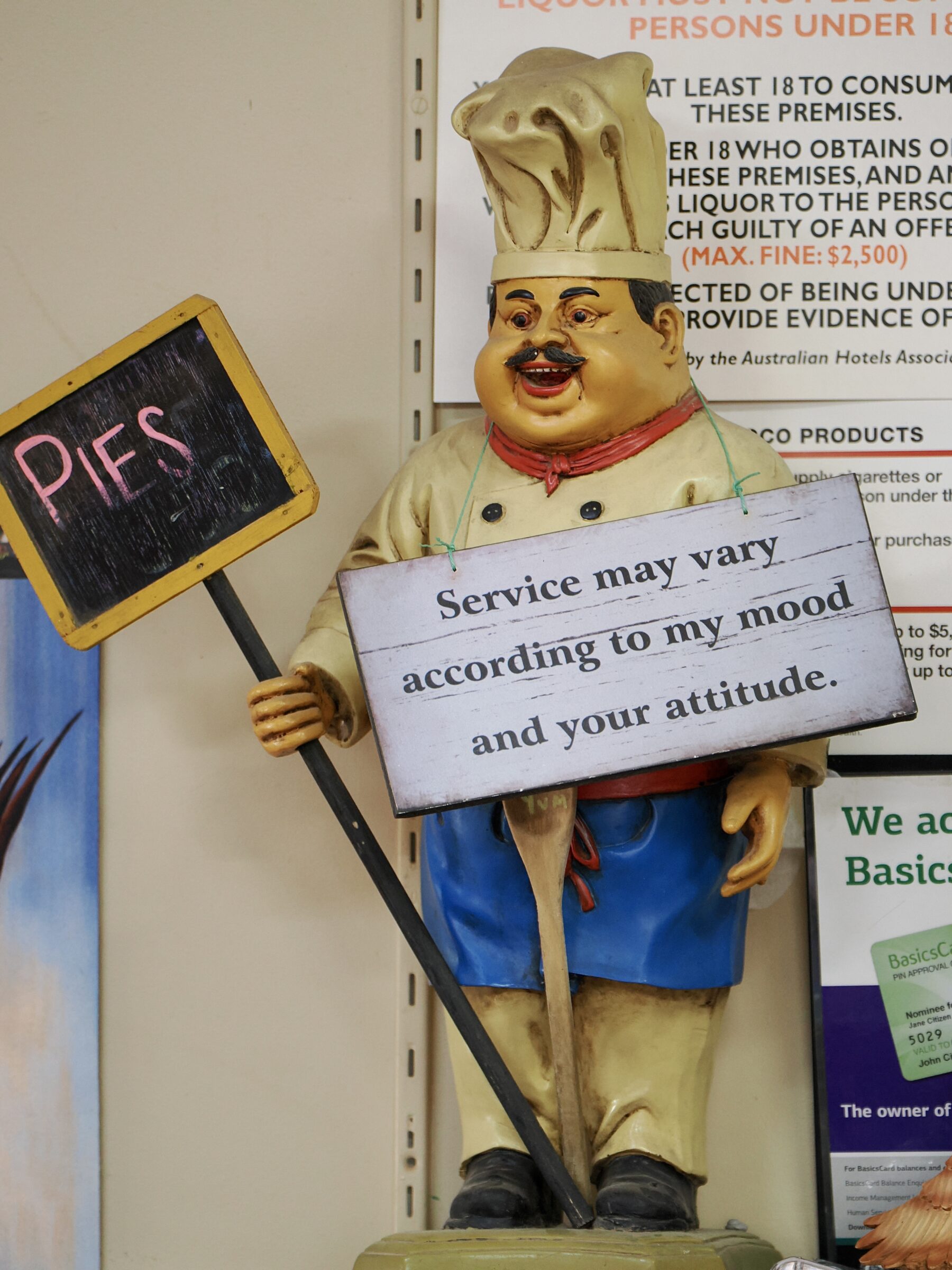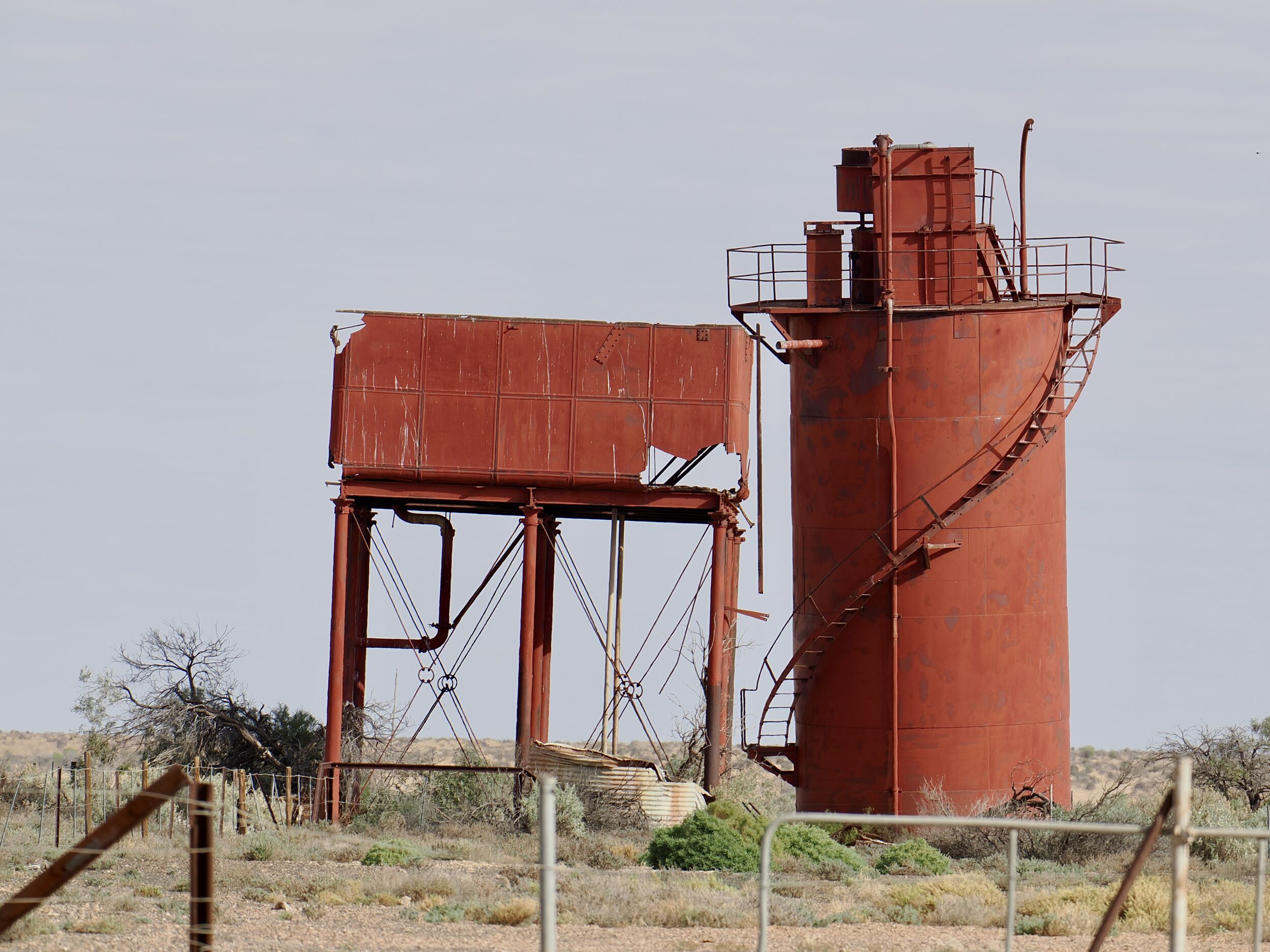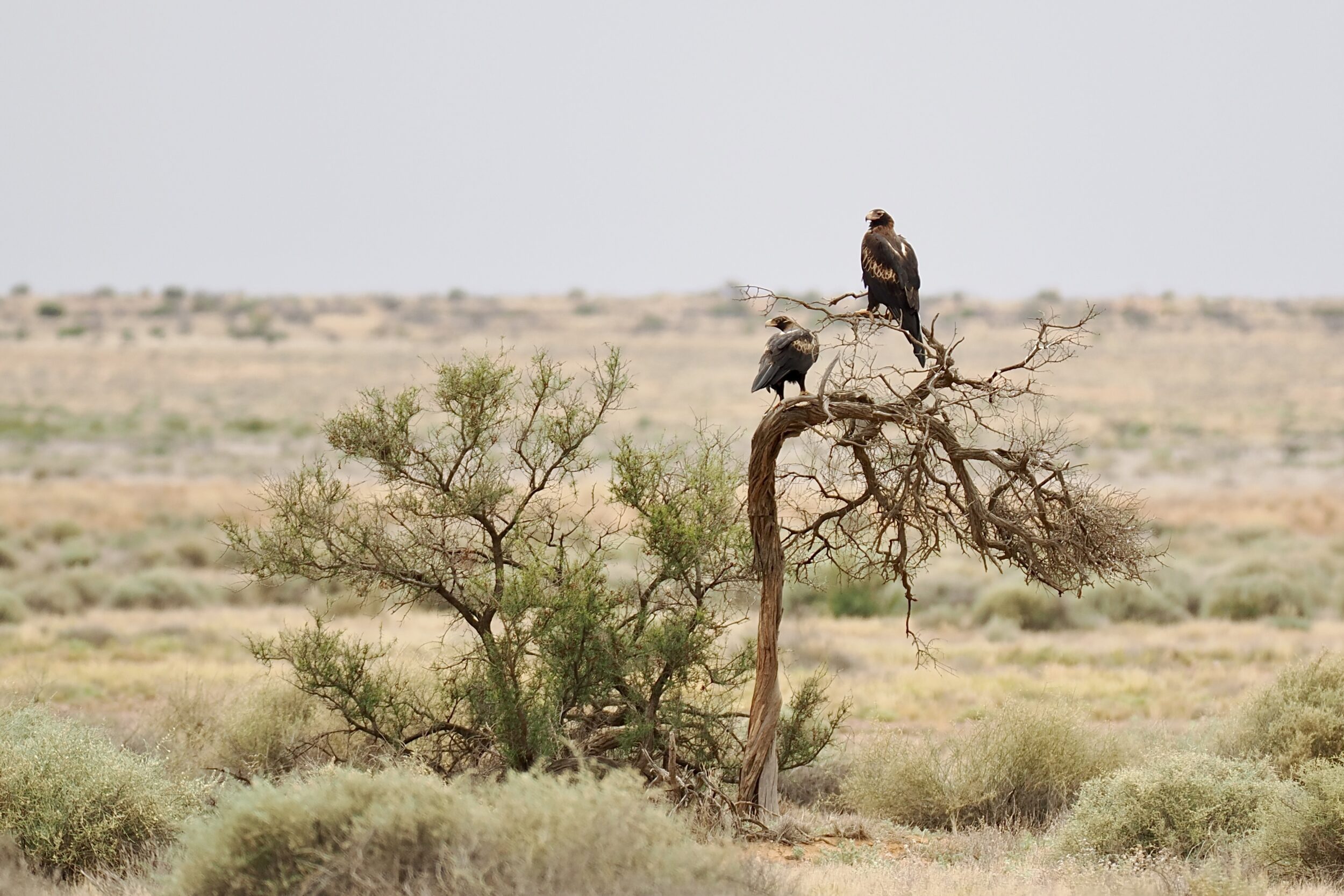“Plane Henge” is the signature “permanent exhibit” in what at least one writer has described as “the world’s largest art gallery”.
Mutonia Sculpture Park sits beside the Oodnadatta Track, less than one hour’s drive west from Marree.
If you were overhead, in a functional aircraft, Lake Eyre South would also be within your field of view.
The “park” includes the ruins of the Alberrie Creek Siding, on what once was “The Ghan” railway line.
Arguably, Mutonia strains to near or beyond breaking point any reasonable definition of “art gallery” or “park”.
Inarguably, its sheer unlikeliness leaves a lasting impression on most visitors.
One Comment